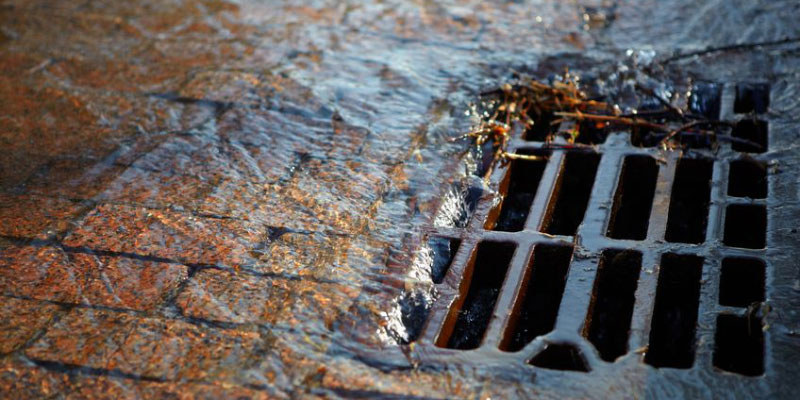
Stormwater presents many challenges. It can introduce pollutants into waterways, but it also is a potentially important source of reusable water.
Stormwater runoff, water that isn’t absorbed into the ground after a weather event, is a potential water source that cities across the world have struggled with for decades. Why is coping with it such a challenge?
Whether the precipitation is water or ice, its addition to the environment can be a problem, especially when a lot of it falls in a short amount of time. When this occurs in densely populated areas, it can cause significant damage without proper infrastructure.
As the United States Environmental Protection Agency explains:
In undeveloped areas, precipitation typically soaks into the ground. When buildings, parking lots, roads and other hard surfaces are added to the landscape, the ground cannot absorb the water. Water […] flows over streets, parking lots and roofs and into a water body or storm drain.
Polluting Waterways
Typically, stormwater is funneled into local waterways. A combination of speed and volume can cause flooding or erosion, which in turn can trigger environmental problems in urban streams or rivers, especially when the runoff is filled with contaminants. The Center for Watershed Protection explains:
Stormwater runoff also picks up and carries with it many different pollutants that are found on paved surfaces, such as sediment, nitrogen, phosphorus, bacteria, oil and grease, trash, pesticides and metals.
Daniel J. Van Abs, an associate professor of practice for water, society, and environment at the Rutgers School of Environmental and Biological Sciences, explained in New Jersey Spotlight:
Existing stormwater discharges are causing enormous damage to our waters, and yet our regulatory system treats them very differently than other pollutant discharges.
Soil acts as a natural filter for these wastes, which can include compounds with high nutrient levels, which threaten the health of waterways. Without grassy or planted areas, city hardscapes contribute can generate a great volume of polluted runoff.
Stormwater Management
Some governments are trying to deal with this by regulating stormwater. For example, in the Clean Water Act of 1987, the EPA mandated stormwater runoff discharge permits for cities. Some approaches, such as requiring developers to install retention basins or drainage, aren’t really working and they aren’t addressing cities’ pressing needs to provide residents and industry with potable water.
Newer approaches combine a variety of management practices, including water reuse; development of constructed wetlands, green roof structures, or other natural areas that accommodate and cope with rainwater; or infiltration projects that slow the water to help it soak into the ground and recharge local aquifers.
Collecting and treating stormwater for reuse helps communities become more sustainable and resilient, particularly during periods of water scarcity. The water can be treated to be used for irrigation, nonpotable reuse, or for plant equipment cooling. It also protects waterways.
The importance of stormwater capture cannot be overstated, according to Adel Hagekhalil, assistant director of the Los Angeles sanitation bureau, who told the Los Angeles Times.
It’s not just doing groundwater recharge. […] You are addressing water quality. You are greening communities. You’re addressing flooding.
Image by abramovtv/123RF.
